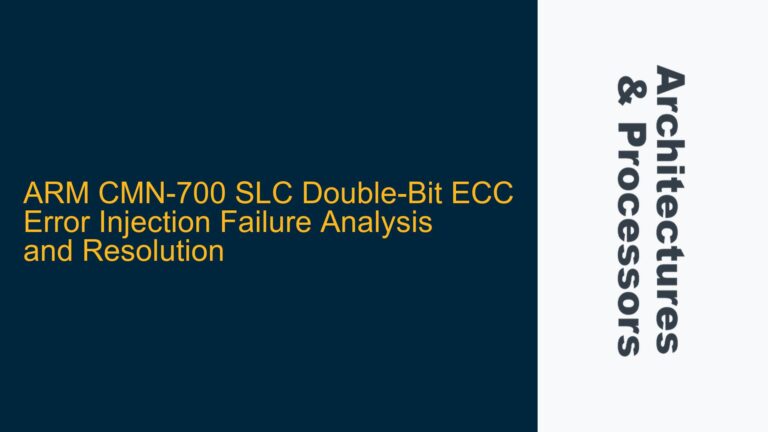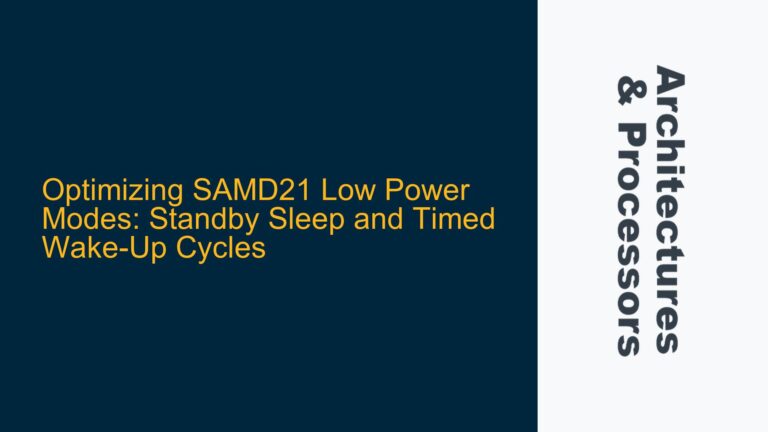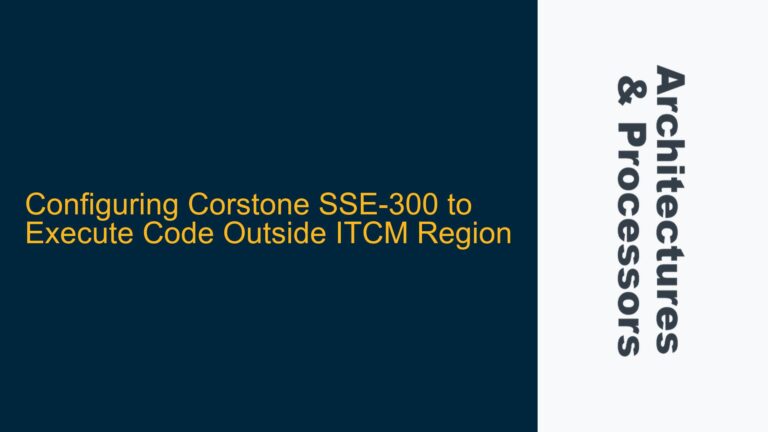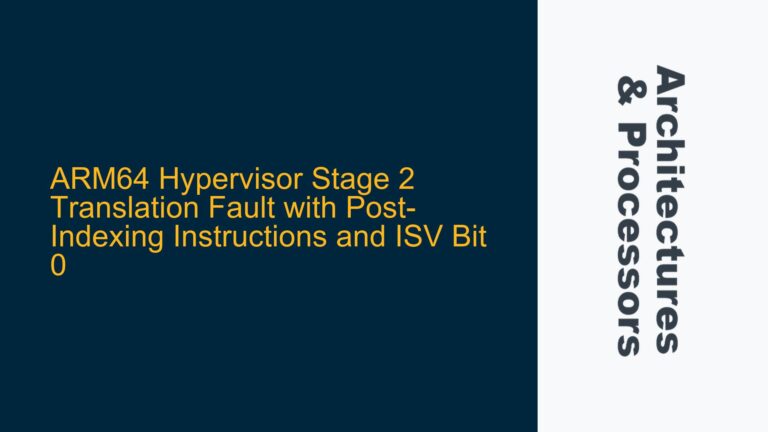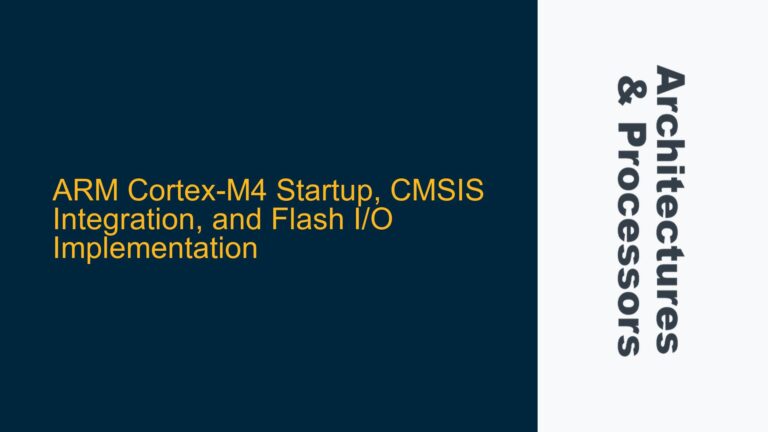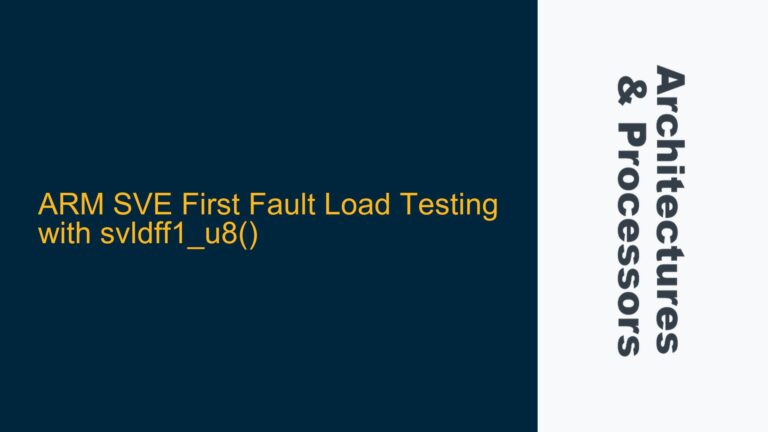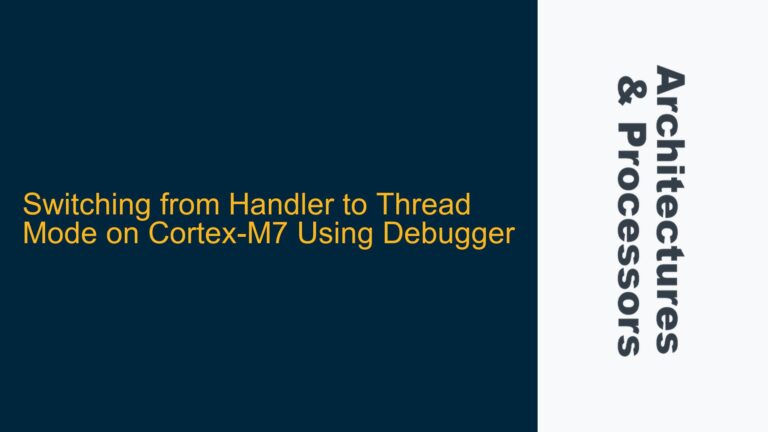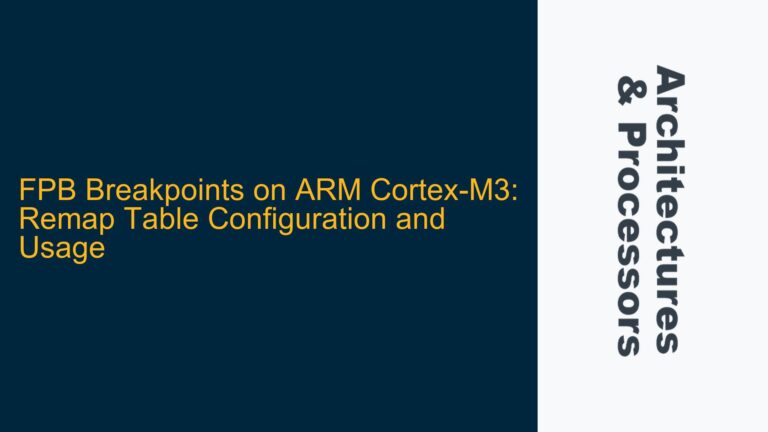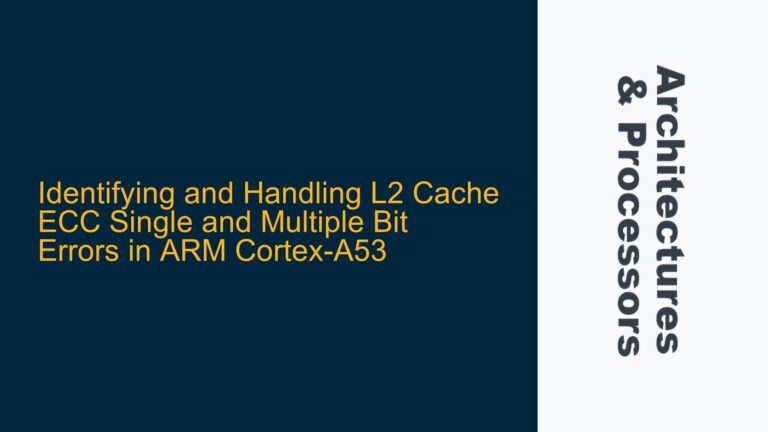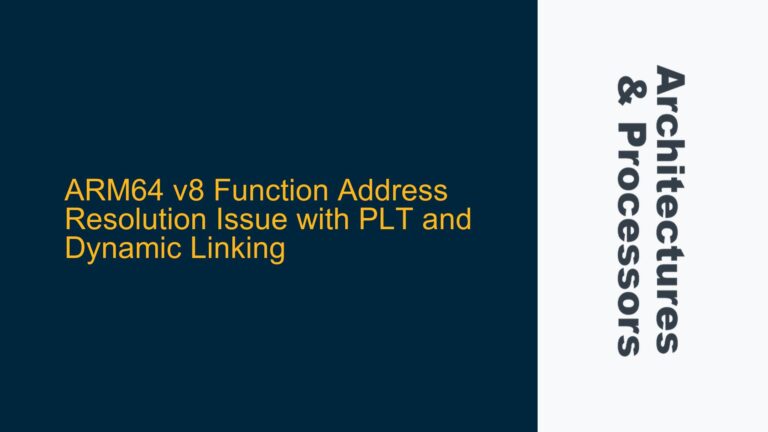ARM CMN-700 SLC Double-Bit ECC Error Injection Failure Analysis and Resolution
CMN-700 SLC Double-Bit ECC Error Injection Mechanism Overview The ARM CMN-700 (Coherent Mesh Network) is a highly scalable interconnect designed for high-performance systems, particularly in server and infrastructure applications. One of its critical features is the ability to inject errors into the system for testing and validation purposes, such as simulating Single-Level Cell (SLC) double-bit…
